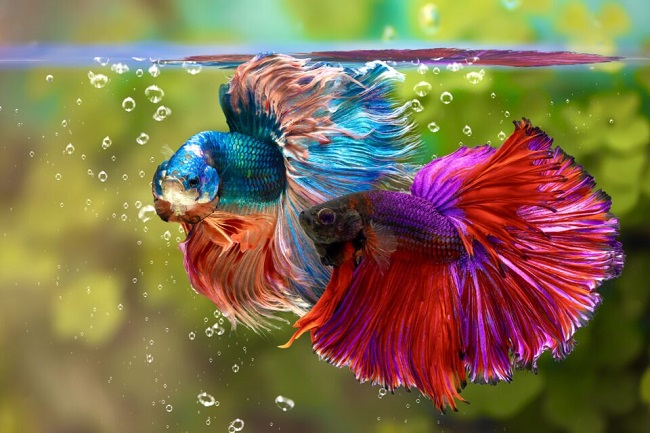Known for their vivid colors, intricate patterns, and flamboyant fins, Betta fish are truly a spectacle to behold. A single glance at these stunning creatures leaves little doubt as to why they’re a favorite among aquarists.
The question, “what are the colors of betta fish?” opens a doorway to a vibrant and diverse palette of nature’s artistry. This comprehensive guide takes you on a deep dive into the fascinating world of betta fish colors, patterns, and tails.

Colors of Betta Fish: Nature’s Living Artwork
Betta fish are celebrated for their vibrant colors. From fiery reds to cool blues, bettas come in almost every color imaginable. Here are some of the most common:
Read Also:
Red: A classic color in betta fish, which can range from a deep, blood-red to a lighter shade akin to cherry.
Blue: Betta fish in shades of blue can display a spectrum ranging from royal blue to steel blue.
Yellow: Often referred to as “non-red” or “golden,” yellow bettas are a sunny sight in any aquarium.
White: White bettas, also known as opaque bettas, showcase an elegant pearl-like hue.
Black: Black bettas come in three types – Melano, Black Lace, and Super Black, each displaying varying intensities of black coloration.
Multicolor: Multicolor bettas do not fit into any specific color class and exhibit at least three colors with none making up more than 50% of their body color.
Intriguing Betta Fish Patterns
Bettas aren’t just about color; they also boast unique patterns that make each fish a masterpiece:
Solid: The simplest pattern, where a betta has a single, uniform color all over its body and fins.
Marble: A gene mutation causes a betta to have irregular patches of color, creating a marble effect.
Butterfly: Butterfly bettas have a solid body color, but their fins are split into two distinct bands of color.
Dragon: Dragon bettas feature solid-colored bodies with thick, white or opaque scaling, giving them an armored appearance.
Mask: In mask bettas, the color of the fish’s body extends to its face, creating a uniform look.
Types of Betta Fish Tails
The tail type is another characteristic that distinguishes bettas. Here are a few:
Veil Tail: The most common type, Veil Tail bettas have long, flowing tails that droop downwards.
Crown Tail: Characterized by extended rays that give the tail a crown-like appearance.
Halfmoon: The tail forms a perfect D shape, similar to a half-moon.
Delta: The tail spreads less than 180 degrees when flared, forming a delta shape.
Plakat: Short-tailed bettas that are closest to wild type.
Read Also:
Conclusion
The world of betta fish is a visual feast of colors, patterns, and tail types. With such diversity, it’s no wonder these magnificent creatures continue to captivate the hearts of aquarists around the globe.
While their external beauty is undeniable, remember that owning a betta goes beyond their aesthetics; it’s about understanding and catering to their unique needs and behaviors.
Regardless of their color, pattern, or tail type, all bettas deserve a well-maintained habitat, a nutritious diet, and a healthy, happy life.
























